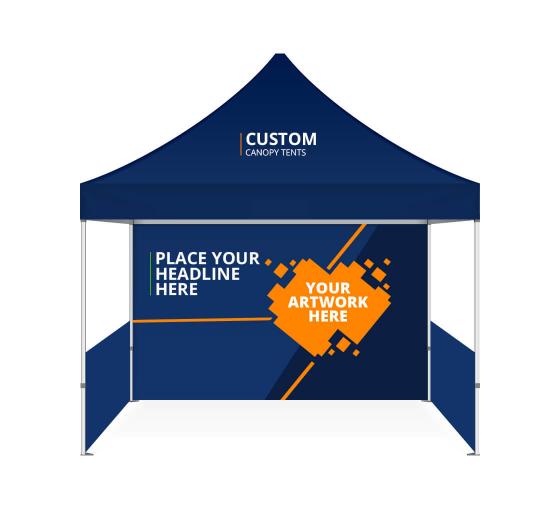The digital age has made it an arduous task for businesses to stay competitive and remain afloat. Customers are constantly exposed to clever content and advertisements that entice them to try out another brand or service, which can render your customer retention strategies obsolete.
One of the hardest things you can convince a purchaser to do is purchase from your brand a second time. The second push often requires incentives, convincing offers, sales, and above all, delivery of quality. If you run a small or medium-scale business and wish to build a loyal customer base, check out these ten effective customer retention strategies.
Garner the Trust of Your Buyers

When building trust between your company and your buyers, you need to realize the following two key factors:
Don’t presume they have faith in your brand because they buy from you.
Trust is a gradual process.
When finalizing a purchase, 81% of customers claim that trust is a crucial factor that influences their decision. One of the primary ingredients in building trust is reliability, which is why your company must deliver premium, consistent quality and value to buyers. Use brand-building advertising tools, like pop-up displays, to convey your company’s value to onlookers so they will be more inclined to make a purchase.
Regular Brand-Customer Interaction
Whether your customers provide feedback or not, your brand must be proactive when establishing communication. If customers have not recently interacted with your brand, consider reaching out and re-discovering your relationship with them.
Communication calendars help launch promotional offers and proactive customer service features that eliminate deterrents without the customers even realizing it. For instance, if a customer’s subscription is about to expire, you can ping them with an email to inform them to renew their account.
Customer Education Programs

Under a customer education program, your brand produces a variety of customer self-service tools, such as a knowledge base and a community forum. Customers can then use these tools to browse solutions to service problems before contacting your support staff.
This program is not limited to products and services. Certain businesses also offer courses in sales, generic marketing, and customer service topics. Such programs can also teach new buyers about the uniqueness of your product and how it can simplify their lives.
Customer Feedback Loop
Customer feedback is one of the most crucial aspects of running a successful business, which is why you need a well-established process to obtain it. One of the most successful strategies is a customer feedback loop, which provides a system for acquiring, analyzing, and distributing customer reviews.
You can collect reliable customer feedback via surveys that ask customers to participate in user testing and focus groups. Your next step should be to analyze the acquired survey results by identifying trends in customer behavior and share them with the relevant teams.
Customer Loyalty Programs
Several businesses often get so lost in the pursuit of acquiring new customers that they neglect their loyal ones. While acquiring new customers is crucial, you must keep your loyal ones engaged via loyalty programs.
A customer loyalty program rewards customers for their unwavering commitment to the brand. One of the best ways to keep loyal customers around is to incentivize their purchases with discount coupons, combo offers, early access to sales, and exclusive promotional giveaways, like t-shirts or mugs.
Market Your Uniqueness

People purchase products that serve value to them. Advertise how your products can eliminate a bottleneck, automate a manually taxing process, or get rid of a kink in the workflow.
If your brand offers unique services at a fair price, the customers must know about it. You can use flags or banner stands outside your retail store to advertise your brand’s products to passersby.
Implement a Streamlined Onboarding Process
A recent study indicates that a whopping 86% of customers claim they would stay loyal to a brand that actively welcomes and educates them after they make a purchase. The same study also concluded that 55% of buyers returned a product when they did not fully understand its utility and benefits. To avoid this pitfall, companies must hop on the idea of onboarding customers to ensure that they make the most of a product or service.
Onboarding demands a combination of resources, including self-service options, product videos, printed instructions, and more. This educational process establishes that your brand cares about buyers and wants them to have positive interactions with your products and services. This step takes the customer/brand relationship from merely transactional to a trustworthy, ongoing dialogue.
Leverage User-Generated Content
Employ social selling strategies with user-generated content like reviews and photos from satisfied customers on your social media. For instance, brands can share shout-outs and compliments from their customers on a specific product or service in order to take advantage of free promotions and build trust.
Share pictures of happy customers on social media and posts about how your products or service improved their lives. Encourage customers to upload stories of them using your products and to mention your brand in exchange for discount coupons or gift vouchers.
Keep Up with Your Online Presence

With the rising popularity of social media, people have started using it as a platform to vent their opinions, even about brands and products. From customers or not, there will be questions, opinions, reviews, and critiques aimed at what you sell.
Be it a general query, complaint, or compliment, you must reply with timely, thoughtful responses. While this might sound like refreshing your social media feed 24/7, it doesn’t have to be that way. You can benefit from marketing tools like your CRM or other social media management tools in order to keep track of notifications and mentions on social media.
Monitor Your Customer Turnover Rates
All businesses receive criticism, and customers might bombard you with nasty emails or roast you on social media. Not all of that negativity must get overlooked. Instead, you must listen closely to customer complaints, even if they are in the form of a rant. If you discover that multiple customers have complaints revolving around a similar issue, it’s time to make improvements to your customer experience and alleviate prevalent pain points.
Several social listening and CRM tools provide you with a comprehensive view of customer sentiments. In-store surveys and feedback are key pieces of information to consider too. A lot of what people complain about can get fixed in your upcoming product lineup. If something isn’t fixable and a widespread issue, you can offer incentives and discounts on their next purchase in order to retain their loyalty.


 Posted in
Posted in 



